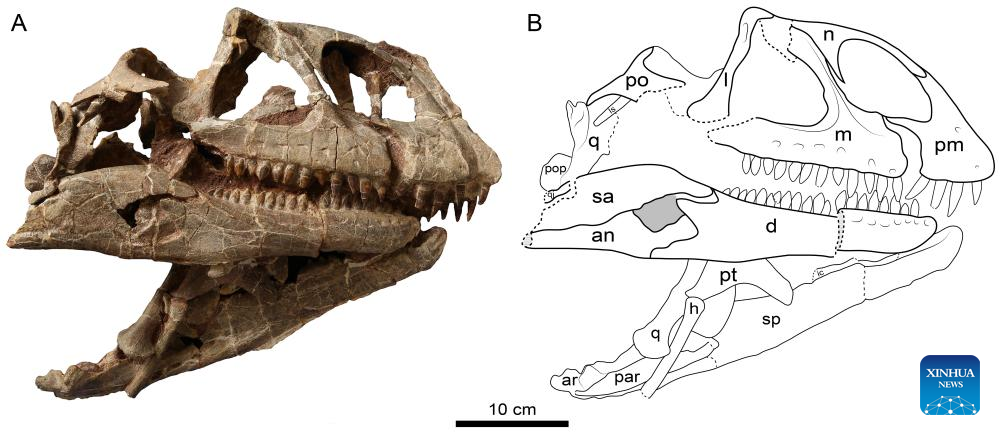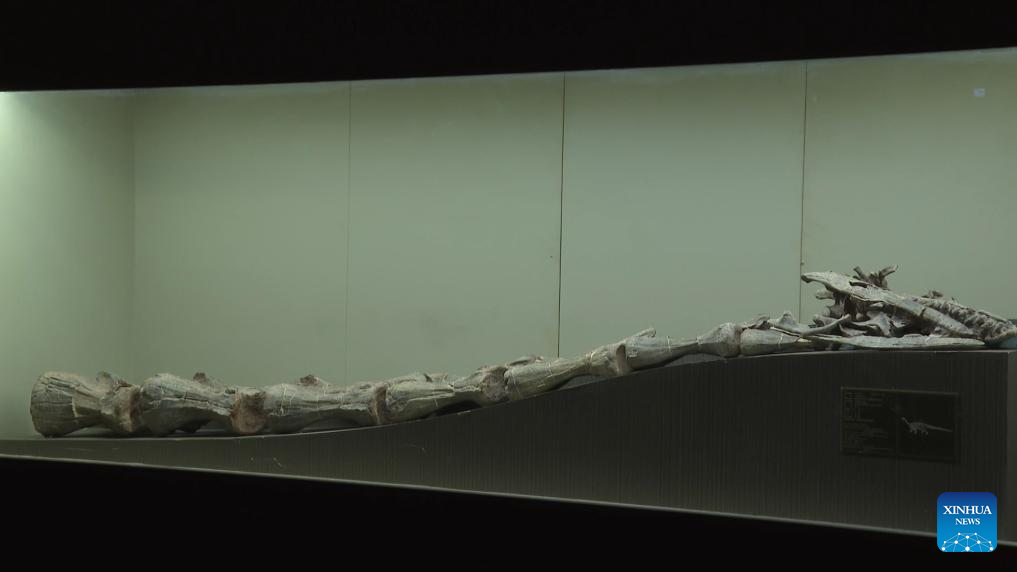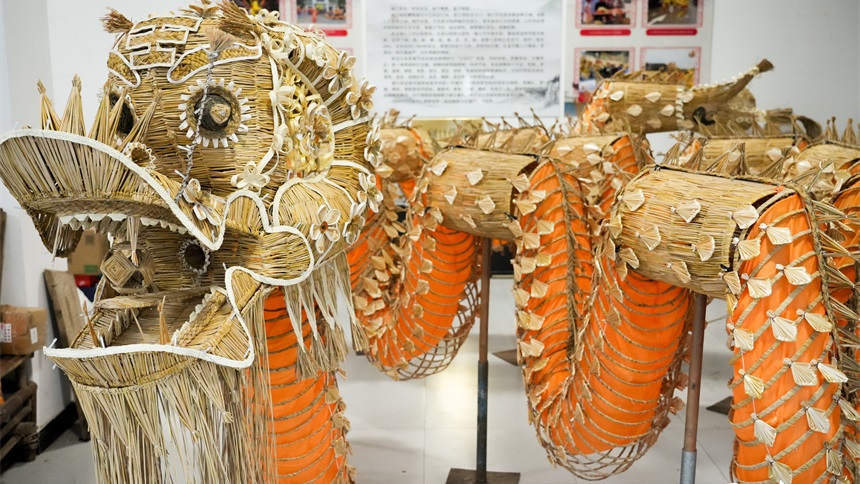New genus of sauropodomorph dinosaur identified in China's Yunnan

This image provided by the Institute of Vertebrate Paleontology and Paleoanthropology of the Chinese Academy of Sciences shows the view and the line drawing of the right side of the skull of Lishulong wangi. (Institute of Vertebrate Paleontology and Paleoanthropology of the Chinese Academy of Sciences/Handout via Xinhua)
KUNMING, Dec. 16 (Xinhua) -- A dinosaur fossil specimen discovered in 2007 in southwest China's Yunnan Province has been identified as a new genus of early Jurassic sauropodomorph dinosaur -- Lishulong wangi.
The findings have been published in the international multidisciplinary academic journal PeerJ.
In 2007, researchers found a dinosaur fossil during a scientific expedition in Dalishu Village, located in Konglongshan Town in Lufeng City. The specimen includes a relatively complete skull and nine cervical vertebrae bones.
According to Wang Tao, director of the dinosaur fossil conservation and research center of Lufeng's natural resources bureau, rainwater washed away the posterior portion of the specimen during excavation. Based on the remaining fossil, the dinosaur is estimated to have been approximately 8 meters in length, he noted.
Through morphological comparisons combined with phylogenetic analyses, researchers found that the specimen of Lishulong wangi cannot be classified into any previously discovered genera.
Previously, a total of eight species of early Jurassic sauropodomorph dinosaurs were identified in Lufeng, belonging to six genera.
Through years of comparative research, it has been found that Lishulong wangi shares morphological characteristics with known sauropodomorphs and belongs to an early-diverging group within the sauropodomorphs.
Lishulong wangi possesses the largest skull among the sauropodomorph members from Lufeng, measuring approximately 40 centimeters in length, said You Hailu, a researcher at the Institute of Vertebrate Paleontology and Paleoanthropology, Chinese Academy of Sciences.
This recent discovery enriches the diversity of dinosaurs in southwestern China and deepens understanding of the evolutionary characteristics of early-diverging sauropodomorphs, You said.
He added that the discovery of this new genus suggests sauropodomorph dinosaurs rapidly spread across China during the early Jurassic period and maintained the advantage of diversity.

This image provided by the Institute of Vertebrate Paleontology and Paleoanthropology of the Chinese Academy of Sciences shows the left-side view of the cervical vertebrae bones sequence of Lishulong wangi. (Institute of Vertebrate Paleontology and Paleoanthropology of the Chinese Academy of Sciences/Handout via Xinhua)

This photo taken on Dec. 14, 2024 shows the fossils of Lishulong wangi displayed in Lufeng City, southwest China's Yunnan Province. (Photo by Liu Zenghui/Xinhua)
Photos
 International cyclists race through Shenzhen in 2024 XDS Cup
International cyclists race through Shenzhen in 2024 XDS Cup Chinese artisan preserves ancient straw dragon craft, creates 28-meter masterpiece
Chinese artisan preserves ancient straw dragon craft, creates 28-meter masterpiece Migratory birds dance gracefully at lake in N China's Inner Mongolia
Migratory birds dance gracefully at lake in N China's Inner Mongolia Thousands of cherry blossoms bloom as winter brings spring-like scenery to SW China's Yunnan Province
Thousands of cherry blossoms bloom as winter brings spring-like scenery to SW China's Yunnan Province
Related Stories
Copyright © 2024 People's Daily Online. All Rights Reserved.





